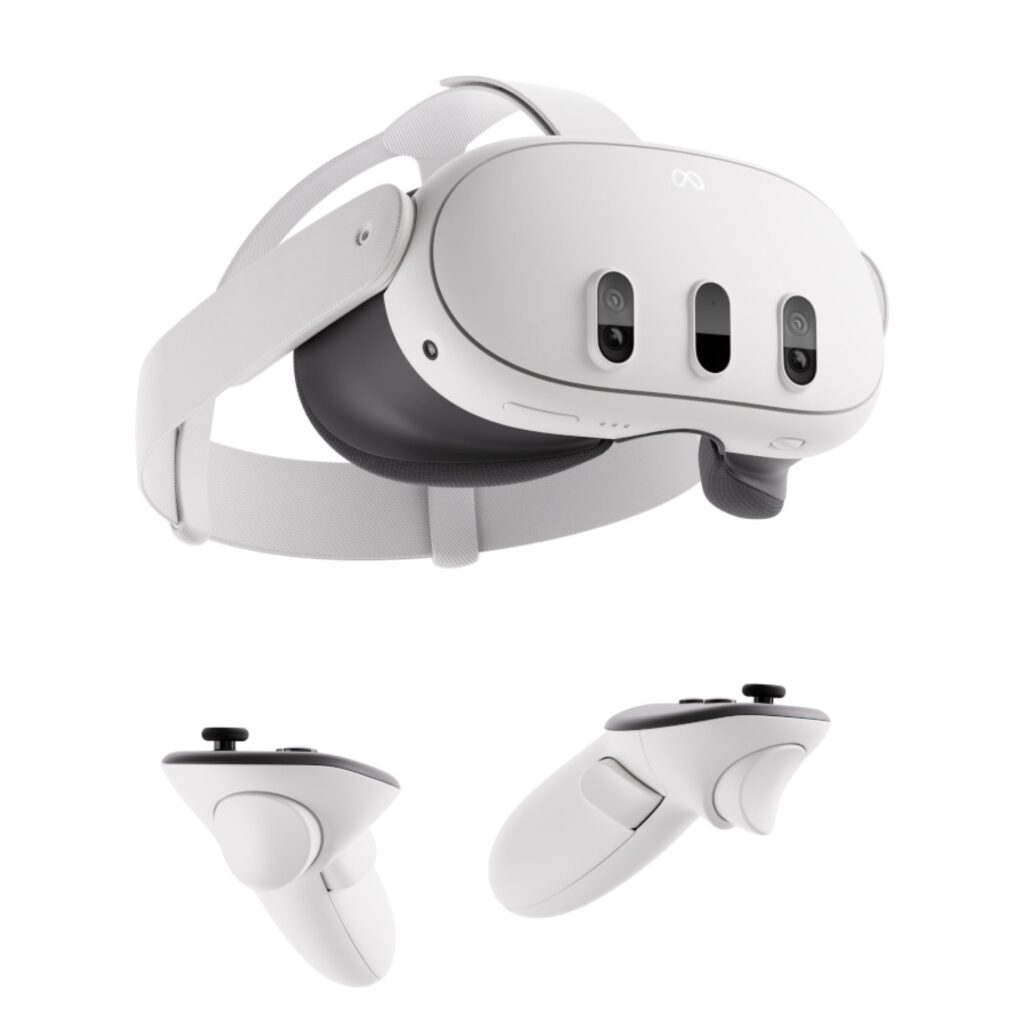Your guide to VR: understanding virtual reality headsets
A VR headset, short for virtual reality headset, is a head-worn device that uses technology to create an immersive virtual environment for the wearer. The most important features are
- Visual: VR headsets use screens, one for each eye, to create a stereoscopic 3D image. This suggests a perception of depth to the brain, making the virtual world feel real.
- Tracking: Sensors inside the headset track your head movements. When you turn your head, the virtual world adjusts accordingly so that you remain in the center of the experience. Some VR headsets also track your body movements for an even more immersive experience.
- Audio system: Speakers or headphones integrated into the headset provide a spatial audio system, i.e. the sounds appear to come from specific locations in the virtual environment, which further enhances the immersion.
- Controls: Many VR headsets also contain controllers with which users can interact with the virtual environment. These controllers can be used to move, pick up objects and perform other actions.






How do VR headsets work?
When a user puts on a VR headset, the near-eye displays show a slightly different image for each eye, mimicking the way our natural vision works. This creates a stereoscopic 3D effect that makes the virtual world appear more realistic and credible. The sensors track the user’s movements and the software adapts the virtual environment accordingly. This gives the user the feeling of actually being present and moving around in the virtual world.
Where do we use VR headsets?
VR headsets are most commonly used for entertainment purposes, especially for video games. They provide a fully immersive experience that gives players the feeling of being in the game world.
But VR headsets have applications that go far beyond gaming. Here are some other areas where VR headsets are being used:
- Education: VR can be used to take students on virtual field trips and give them the opportunity to explore places that would be difficult or expensive to visit in person. For example, students can virtually travel to the Great Barrier Reef or take a walk on the surface of Mars.
- Healthcare: VR is used in healthcare to support pain management, phobia treatment and physiotherapy. For example, VR can create a relaxing environment that helps patients in the treatment of chronic pain.
- Design and architecture: VR enables designers and architects to create and walk through 3D models of their designs before they are built. This can help to identify potential problems and make changes early on in the design process.
- Company: VR is used in business for a variety of purposes, such as product design, marketing and sales. For example, companies can use VR to give customers a virtual test drive in a car or a tour of a new product
Types of VR headsets
There are two main types of VR headsets:
- Stand-alone VR headsets: These all-in-one devices do not require a computer to function. They have their own processor and operating system and are usually connected to the computer via Wi-Fi to download content and access online functions.
- Connected VR headsets: These headsets require a powerful computer to function. They are connected to the PC via HDMI and USB cables. Some high-quality wired headsets may also require additional hardware such as base stations for in-room tracking.
Ready for VR experiences?
- Initial setup
- Calibration: Some VR apps may require an initial calibration to ensure correct tracking and alignment between your movements and the virtual environment. Follow the instructions on the screen to calibrate the headset or controllers.
- Tutorials: Many VR apps, especially games, offer introductory tutorials to familiarize you with the controls, mechanics and basic interactions within the VR experience.
- Elements of the user interface (UI):
- Head movement: VR applications rely heavily on head movements for navigation. Look around the virtual environment by turning your head.
- Controls : Many VR applications use controllers for interaction. Point, grab, select and manipulate objects in the VR world using the controller buttons and triggers.
- Gaze-based interaction: Some VR experiences use gaze-based interaction, where you can select an object or trigger an action by focusing your gaze on it.
- Voice commands: A growing number of VR applications enable voice commands to interact with the environment or to control various aspects of the application.
- In-app instructions
- Menus and overlays: VR apps often use virtual menus or overlay displays that appear in the VR environment itself. These menus can offer options or additional information.
- Contextual cues: Some VR applications provide contextual cues or visual clues to guide your actions within the experience. These can highlight interactive objects or give instructions for certain tasks.
